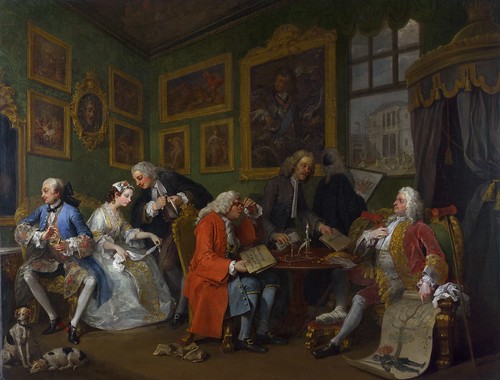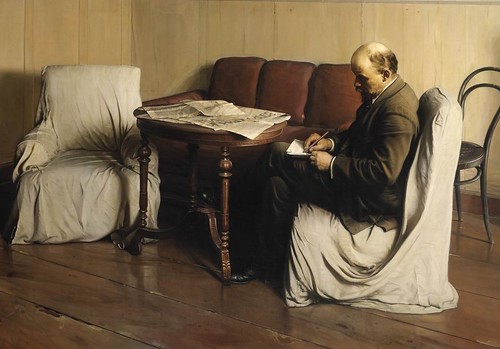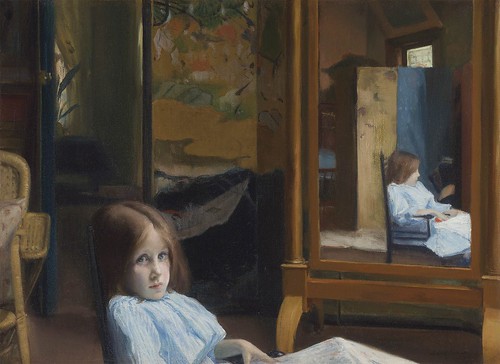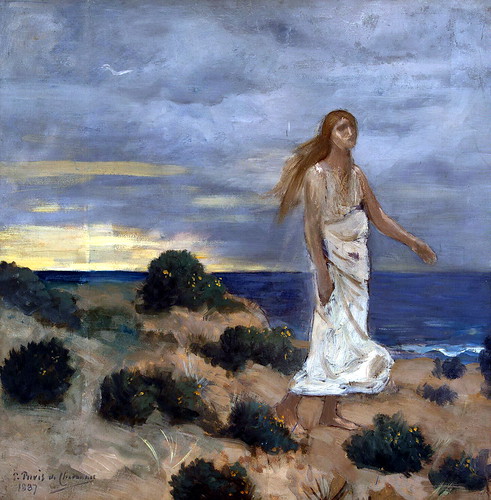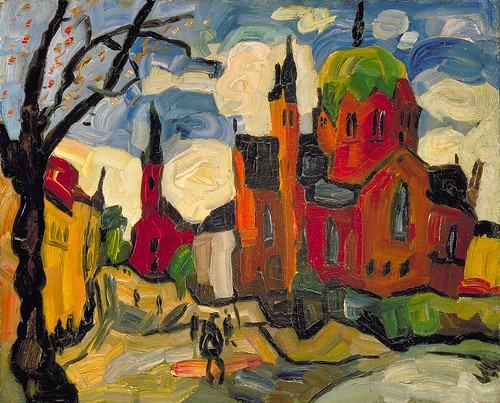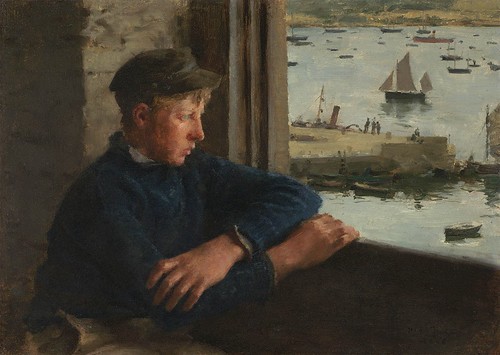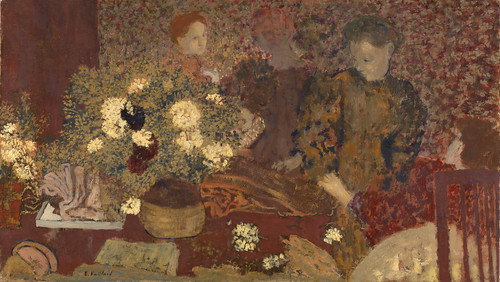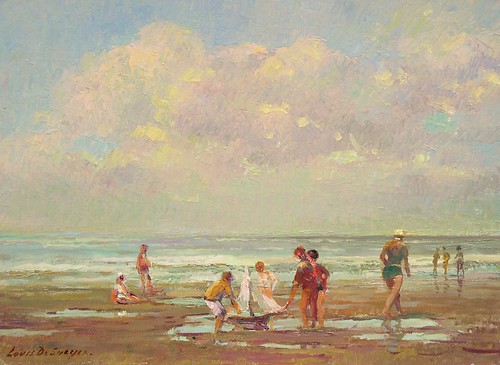
William Hogarth - Marriage A-la-Mode: 3 The Inspection [c.1743], originally uploaded by Gandalf's Gallery.
The third scene takes place in the room of a French doctor. The Viscount is seated with his child mistress beside him, apparently having contracted venereal disease, as indicated by the black spot on his neck, Hogarth's symbol for those taking the mercurial pills which were the only known treatment for this ailment. He holds towards the doctor a box of pills; other boxes on the chair and in his mistress's hand suggest he is seeking an alternative remedy. An older woman holds a clasp knife; she appears to be the young girl's mother.
The machines to the right, identified in the inscription on the open book, are for setting a broken shoulder, and drawing corks. A skeleton embraces a model in the cupboard behind the Viscount.
[Oil on canvas, 69.9 x 90.8 cm]


